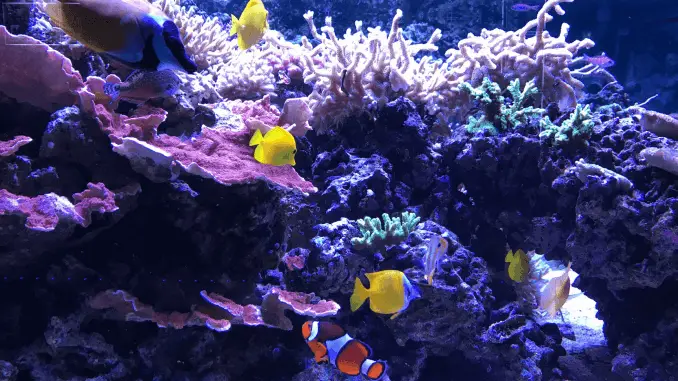
When you’re just starting out as an aquarist trying to maintain the condition of your aquarium can be challenging.
There are so many things you need to keep an eye out for; this means there are a lot of mistakes that you can make.
A lot of the time these beginner mistakes are made because of a lack of experience.
So in today’s article, we are going to look at the 21 most common aquarium mistakes and discuss how you can avoid making them.
Need To Know More? Get our roundup of beginners mistakes now and avoid making simple mistakes by learning from the experts.
Adding Fish Before the Aquarium Is Ready
I must admit, I too am guilty of this mistake.
You get your new aquarium and you’re excited to add fish and set the tank up straight away. If you add fish before your water parameters are stable it’s very likely your fish will die.
Before you add your fish, your tank must have stabilized.
This means you need to complete a nitrogen cycle and water parameters (pH, temperature, hardness) must be stable.
Only after this can fish be added to your tank.
Buying a ‘Small’ Aquarium
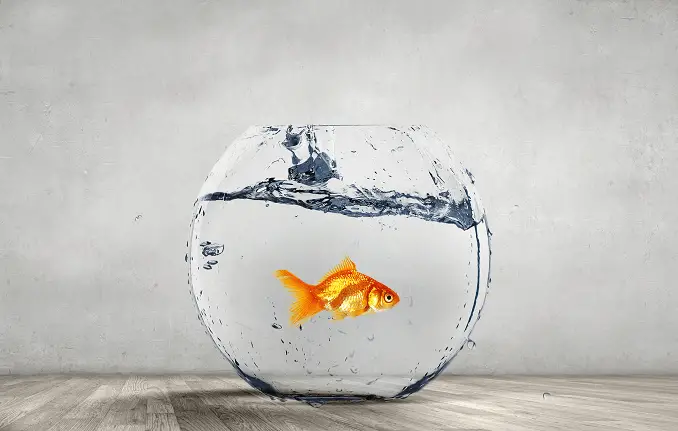 A great myth amongst beginner aquarists is that a small aquarium is easier to maintain than a larger aquarium.
A great myth amongst beginner aquarists is that a small aquarium is easier to maintain than a larger aquarium.
This is true but only to a certain extent.
I would generally recommend beginners find a tank between 30 and 60 gallons.
So why is it a mistake to start with a small/nano aquarium?
In a smaller tank, there is less water which means that the condition of the water can change incredibly quickly.
In a larger aquarium, it is far easier to maintain the water parameters.
Accidental Poisoning
Believe it or not, it’s actually incredibly common for beginners to poison their fish by making the water in their aquarium toxic.
The main causes for this are:
- Failing to understand the nitrogen cycle
- Excessive feed and waste left in the tank
- Too many chemicals are used unnecessarily
Perhaps the strangest case of accidental poisoning I’ve come across is due to the filter being turned off at night.
The story goes – a beginner aquarist had their aquarium in their bedroom. The light hum of the filter disturbed them, so each evening they would turn the filter off.
Each time the filter is turned off the bacteria inside will start to die due to a lack of oxygen. This can ultimately end up killing the younger fish in your aquarium.
Not Using Live Plants
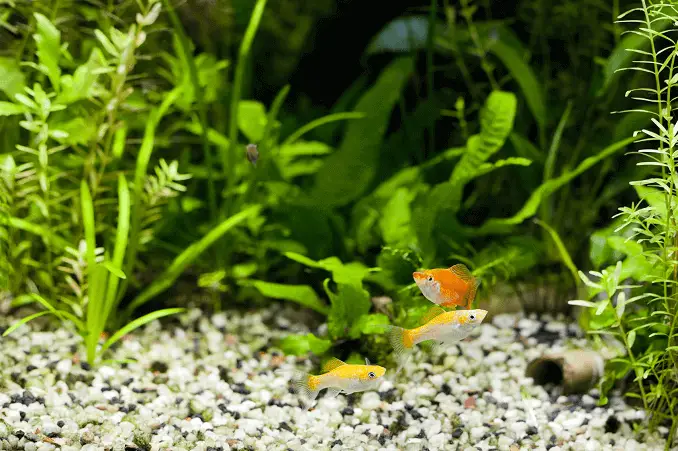 This depends on your aquarium but in a freshwater environment I would consider live plans a necessity.
This depends on your aquarium but in a freshwater environment I would consider live plans a necessity.
Most beginners see plants as complex and something which don’t benefit the aquarium. This couldn’t be further from the truth.
The biggest benefit of plants is that they help to prevent algae because they eat the same nutrients.
Live plants also help to oxygenate the water. You should be careful though and not include toxic things in your tank.
Using a Cheap Starter Filter
You will see many aquarium starter packs come with filters that are barely big enough; they will only turn the water over 2, maybe 3 times per hour. This isn’t enough and it can be dangerous for your fishes’ health.
As a rule of thumb, you should be looking for a filter that turns the water over at least 4 times per hour.
The good news is you can’t over-filter your water so it’s best to have a filter too big than too small.
Not Routinely Testing the Water
Unfortunately, aquariums aren’t “set it and forget it”. They require constant maintenance, especially new aquariums.
With new aquariums you should be testing the water daily, and with established aquariums monthly.
You should be checking the:
- pH levels
- ammonia
- nitrites
- nitrates
- water hardness
Also, I should note that if a fish unexpectedly dies, you should also check the water parameters.
Adding Too Many Fish
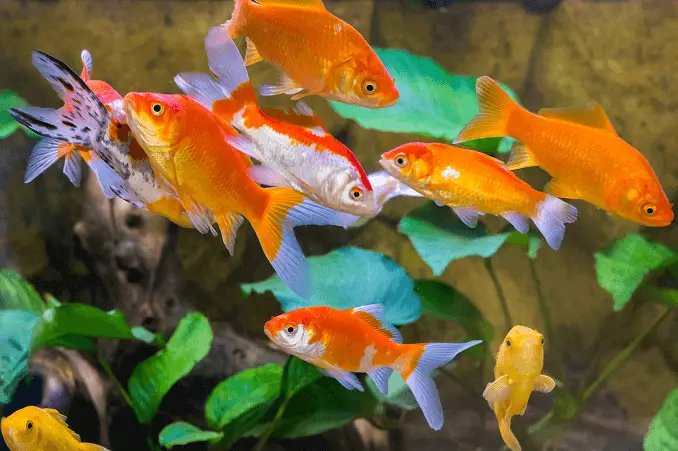 This is a very similar mistake to adding fish to a new aquarium.
This is a very similar mistake to adding fish to a new aquarium.
Adding too many fish to an aquarium at once can destabilize the water chemistry and can cause the nitrogen cycle to stall.
As a good rule of thumb only add up to 3 fish at a time to your tank.
Once you’ve added the fish to your tank, wait until you’ve completed a nitrogen cycle and then you can add more fish.
Not Understanding the Nitrogen Cycle
One of the most confusing aspects of fish keeping for a beginner is the nitrogen cycle.
Beginners tend to go one of two ways: they either completely ignore it or stress too much over it. Whilst it is slightly complex, once you get the hang of it, it isn’t anything too difficult and it’s just something you take in your stride.
All you need to know here is that failing to encourage and perpetuate the nitrogen cycle will result in your fish dying.
If you’re looking to understand the nitrogen cycle in more depth read our article here.
Not Having Enough Patience
If you ask an aquarist what is their single most important character trait, they will unanimously agree:
Patience.
Whether it is waiting to add fish to your tank, waiting for the nitrogen cycle to complete, or waiting for the growth of beneficial bacteria, chances are you will be waiting!
You will soon learn that keeping fish requires patience by the bucket load.
Keeping Too Many Fish
Overstocking the aquarium is a very common mistake that beginners make.
It can cause problems with your filtration system and as a result, can make maintaining your water parameters near impossible.
You may have been told that you can stock 1” of mature fish per gallon of water. This is wrong.
Instead, you should use the 75% rule. This states that you multiple your tank capacity by 75% and this tells you how many fish you can keep.
Let me show you how this works with a 30-gallon aquarium. You multiple 30 by 75%; you end up with 22.5. This figure is the total length of mature fish you can keep. So in a 30-gallon tank you can keep up to 22.5” of mature fish.
Overfeeding
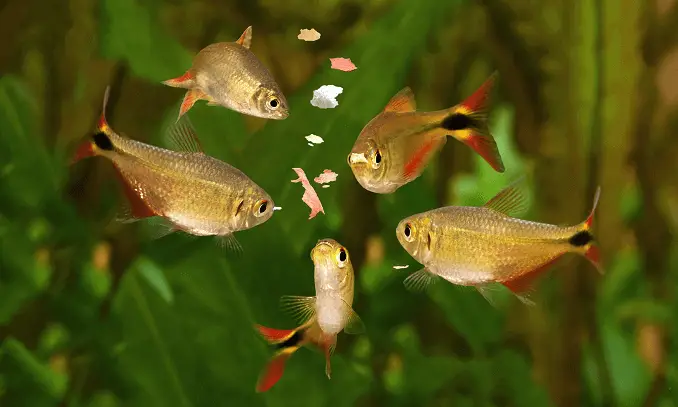 Without a doubt this is the biggest beginner mistake. It’s hard to know when fish are hungry, in-fact they always appear to be hungry.
Without a doubt this is the biggest beginner mistake. It’s hard to know when fish are hungry, in-fact they always appear to be hungry.
If you keep feeding your fish they will generally keep eating. This is precisely the trap beginners fall into. They keep feeding their fish because their fish keep eating.
This produces a lot of waste and can mess up the nitrogen cycle.
When you start, you should feed your fish once day; this will prevent over feeding. Whatever you give them they should be able to eat within five minutes.
Insufficient Water Changes
As a general rule, you should look to do a 15% water change each week.
Beginners often neglect this and think they can get away with less frequent larger water changes. Weekly water changes are crucial to keep an aquarium healthy.
Poor water conditions will cause your fish stress and this increases their susceptibility to disease.
Blindly Trusting Pet Stores
Let me preface this by saying there are some amazing fish stores out there. However, some larger more general pet stores have been known to provide erroneous advice.
Before you visit the store you should do at least some online research so you can establish if they know their stuff or not.
Unfortunately just because your local pet store told you that keeping an Oscar in a 30-gallon tank is ok, it doesn’t make it true.
Make sure to double-check the information they tell you, either here or in a book. It doesn’t matter where you check just make sure you do! A second opinion never hurts anyone.
Lack of Biological Filtration
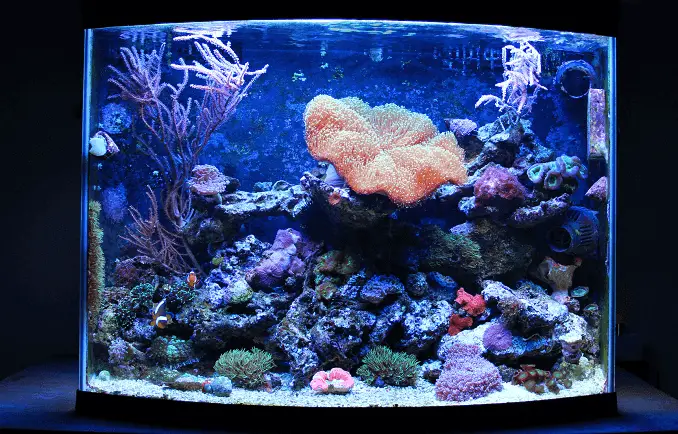 When you’re getting your first aquarium it’s a commonly held belief that an air-stone and a pump will provide enough filtration.
When you’re getting your first aquarium it’s a commonly held belief that an air-stone and a pump will provide enough filtration.
This is incorrect.
Regardless of the size of the aquarium, you should always have a biological filter. Small aquariums can get away with the cheaper hang-off-back style.
You need a filter to ensure the growth of beneficial bacteria.
Also as a tip, remember when cleaning the biological medium, use aquarium water and not contaminated tap water. The chlorine in tap water will destroy your live bacteria- not ideal.
Mixing Incompatible Fish
Many beginner fish keepers think that all fish get along and you can keep any species you want together.
This is wrong.
To start with many fish need different conditions to live in. At a basic level, this is freshwater vs saltwater, but also differing water parameters.
Secondly, a lot of fish are carnivorous which means they will eat other smaller fish.
In each of our breed information articles we detail the fish’s compatibility with other fish. Before you add a fish to a tank you should check its compatibility to make sure it’s safe to add.
Constantly Re-arranging Aquarium
Constantly moving things around in your tank can be distressing for your fish.
Don’t really like that rock? Maybe it looked better in the store? How about those plants?
You should set up your tank and make sure you’re happy with the layout before adding your fish.
A common ‘re-arrangement’ I see is moving from artificial plants to real plants. This can really upset your fish. So whenever possible don’t add fish to the tank until you’re happy with the visual appearance and layout.
Don’t Understand Freshwater Vs Saltwater Aquariums
To many non-aquarists, fish tanks are all the same. We aquarists know this couldn’t be any further from the truth.
A common mistake is not understanding the difference between a freshwater and saltwater aquarium.
Saltwater and freshwater aquariums have their own unique set of maintenance requirements.
Make sure you understand the differences and their implications before you decide which route to take. Read our myth debunker on saltwater and freshwater aquariums for more information.
Trying to Find ‘The One Way’
As a beginner, you often fall into the trap of thinking there is a single right way to do things. As a result, you end up spending a lot of your time searching for the one right way to do something.
With fishkeeping there generally isn’t a single best way to do something.
You should watch, read and listen to advise and then go about finding the best way to do it for you and your aquarium.
My rule is: if it works for your aquarium then it’s the right way to do it!
Not Treating Algae Appropriately
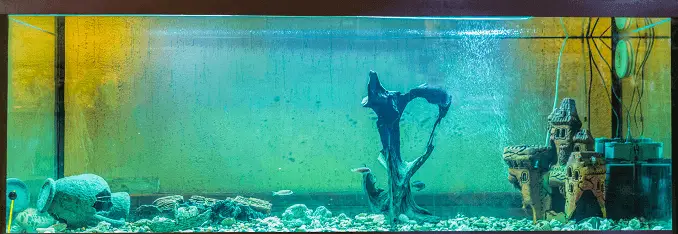 When algae first appear in your aquarium it can be quite alarming, especially if you aren’t expecting it!
When algae first appear in your aquarium it can be quite alarming, especially if you aren’t expecting it!
This generally happens in a beginner’s tank because they aren’t cleaning it enough or because the tank is left in direct sunlight.
Whatever the cause, you should remove the algae immediately. Whilst it isn’t something you should worry about, if left unattended it can do harm.
To prevent it from occurring in the future you could look to add live plants in your tank.
Using Too Many Chemicals
One of the worst things you can do to your aquarium is flooding it with unnecessary chemicals.
The two most common reasons I hear for excessive chemicals are: to prevent illness and to stop algae growing. For instance with algae, people tend to put lots of Algaecides in their tank; often this is unnecessary.
First of all you shouldn’t use Algaecides as prevention; you should only use them when you have an algae outbreak.
Secondly, you can control algae outbreaks naturally through water changes, reducing feed, and darkening the tank. This is generally also much healthier for the fish.
You should only add chemicals to your aquarium when it’s absolutely necessary.
No Maintenance Schedule
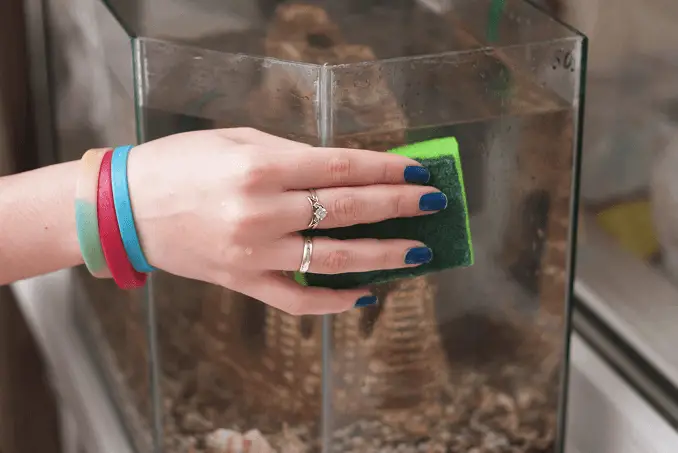 Many people have learned this lesson the hard way. When was the last time you cleaned the tank and tested the water?
Many people have learned this lesson the hard way. When was the last time you cleaned the tank and tested the water?
Having a schedule for maintenance that you stick to helps you avoid problems down the road.
Keeping a perfect aquarium requires consistent maintenance. Key maintenance activity includes:
- Water changes
- Testing water composition
- Tank and filter cleaning
You should plan to spend 1-4 hours each week on maintenance. The exact figure will mainly depend on the size of your aquarium. The bigger the tank, the more time is needed.
Summary
I hope by reading through these beginner aquarium mistakes, you can avoid making them yourself.
A lot of the time these mistakes are made just because of a lack of experience.
In my opinion, the three most common aquarium mistakes I see are:
- Incorrectly introducing fish to your aquarium.
- Not understanding the nitrogen cycle.
- Not scheduling time for aquarium maintenance.
If you understand these 3 key aquarium mistakes, you will be off to a great start.
Let us know in the comments section below what you think the biggest beginner mistake is…

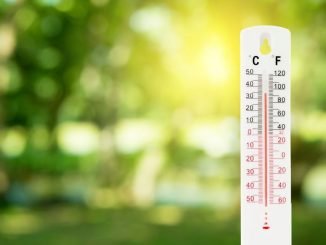
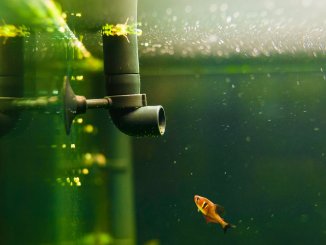
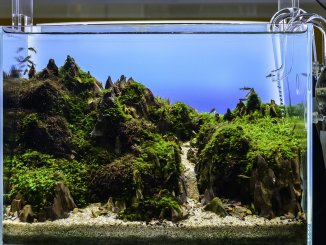
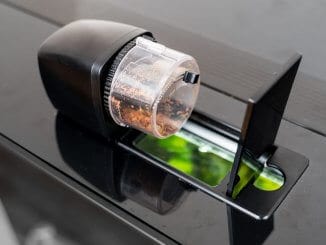
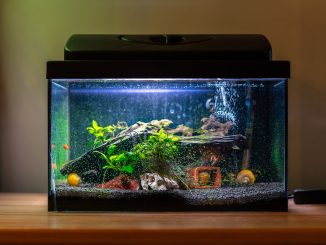
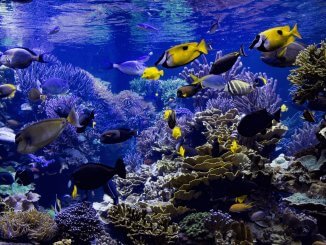
thanks for the article it was really helpful. im looking at getting a tank and fish. just wary of taking the first step. i dont want any harm to hit the fish
Hi John,
The most important thing I can recommend is to make sure your tank is cycled properly. If you’re worried about this take a sample of your water to your local fish store and they can test it for you. It can be quite daunting to get started but I’m sure you’ll be fine – it looks like you’re doing plenty of research.
Robert
It’s not as hard as it seems. It’s a very rewarding hobby. I used to have fresh water for many many years. Stopped for a about 4 years and now started salt water tank. I am taking it slow and all is good so far. But read before doing and you will be fine.
Confused. You state to get a larger aquarium as better for fish and less upkeep. Yet, at end of article you state 1 to 4 hrs maintenance. The larger the tank the longer the time. Please advise. Thank you
I have just started a 57 ltr fish tank and planted fresh plants. Happy with setup. I was told to be patient and leave it for around a month before adding around 10 neons. Should I be changing 20% of the water every week for that first month, even tho theirs not fish ?
Hi Marcus,
Yes you should be doing water changes during the cycling process. You can read more about water changes here: https://www.fishkeepingworld.com/how-to-clean-a-fish-tank/
Thanks,
Robert
I have a 57 ltr fluval flex tank with the set up filter system. Would this filter 4 x every hour
Hi Marcus,
You filter will most likely have come with a measurement on filter flow (how many litres per hour).
To work out how many times the tank water passes through your filter in an hour, divide the volume of your tank in litres by the flow rate in litres per hour.
Hope this helps,
Thanks, Robert
In a moment of weakness, I got my 4yo son a fantail goldfish (**cough* *cough* *gateway drug* *cough**). My plan was if it lives and he takes responsibility for a month, we will upgrade. Ffw-1mo fish is getting big 4yo still in love with his new friend. I find a 20 gal tank with 30gal filter pump, gravel, deco, 2 heaters, etc. for $30.
We used to have 3 tanks in our house when I was young. I thought I knew what I was getting into. Between the 80s/90s and now, availability of info and knowledge seems to have changed for the better. I was trying to do things right, but I now know I have been impatient. I just realized I have ashamedly made almost every mistake on this list. So far the only casualty has been 1 nerite zebra snail. I have returned 3 fish due to aggressive bullying and 1 black mystery snail because ALL the fish were beating him up. Already treated for black spot and ick. Now I’m obsessing over trying to fix my mistakes. I don’t know if I have a nitrogen cycle established? I bought a beautiful catfish and “adopted” a bunch of Molly fry. My well water is crazy alkaline, pH is high, I have cloudy water, brown algae, and everyone has beat up tail fins from the 3 bullies. I found out my pet store misdirected me and my beautiful catfish should truly be in a +44gal tank. Bubbles the goldfish has tears and white fuzzy lesions on his tail.
Apparently I am doing ALL this the hard way. I don’t know where to start fixing things first.
Hi Nikki thanks for your message. Oh dear, I am sorry to hear this! I remember sending this article to a friend who works in a fish store and he said he wishes he could give this advice to all new customers – how I wish all stores would too! The most ideal solution I have for you is to buy a 50 gallon tank, and start cycling it from scratch. You can read more about how to do that here: https://www.fishkeepingworld.com/how-to-set-up-a-fish-tank/.
Do any of the fish still have any diseases? If not, after around 4 weeks, or whenever the cycle is complete, you can transfer the fish to the new tank, and perhaps keep the old one as a quarantine tank.
Robert
Will fish in a fish tank die if they can’t “see” out? An aquarium was left in my daycare room and the kids are distracted by it to the point of interfering with lessons. We blocked the sides but the fishes owner claims doing so will “kill her fish.”
Hi Sue,
Thanks for your question. In all honesty, I have never heard of this being done. The beauty of fish is that they are there to be observed, they are great for children who have additional needs to sit at watch, we have a great infographic here on the benefits of keeping fish, related to mental health: https://www.fishkeepingworld.com/15-ways-fish-reduce-stress-and-improve-mental-health/. I suggest that if they are too distracting that you could perhaps find a new home for them?
Thanks, Robert
So is it ok if I put a 22.5″ koi fish in a 30 gallon tank?
Wow! Impressive size, what species of Koi do you have? A 30 gallon tank is no where near big enough for a fish this size. You’d need around a 400 – 500 gallon tank or pond. Thanks, Robert
My son’s 2 very large gold fish eat all of the pleco’s spianch,kale,and algae wafers before it gets a chance to eat any. My son wants to know if we can move the pleco to another container just to feed it each day?
Try and feed the goldfish first, on one side of the tank, and drop the pleco’s food on the opposite side of the tank. Thanks, Robert
I’m a beginner. So probably dumb question. Should I run the filter 24/7?
Hi Jill, yes you need to leave the filter on all the time. Thanks, Robert
This is the best information I have found. My granddaughters received a 5 gal tank. I have no knowledge of fish tanks. My ph is high. We have well water and I’m going to siphon debris but must admit I am not proficient at it. Where do I start? As you can tell I am beside myself.
when first starting fresh water tank do you need to do water changes if nothing live is in there?
Hi Dave, do a 25% water change before you add any fish. Thanks, Robert
I have a 125g tank.. probably mostly fully stocked but several incompleted schools. Can i complete these schools although it probably means overstocking? Im willing to do more water changes and my live plants and snails must be helpful. I wouldnt want to find new homes for any of my fish and theyre never hiding because of bullying. Id just like to know they have enough company.
Hi Cin, I don’t ever recommend over stocking, is it possible that you could have another tank and split the schools between the two? It’s also worth checking your stock levels using an online calculator, you might find your not overstocked and that you can add more fish to meet recommended school numbers. Thanks, Robert
I find your comment “a common ‘re-arrangement’ I see is moving from artificial plants to real plants. This can really upset your fish.” quite interesting. I am trying to replace all my fake plants with live. When removing 3 major fake plants from the tank and rearranged the decoration a little I encountered consecutive deaths over the course of 2 weeks – 2 Albino Cory’s and 2 female Guppies. Can you elaborate on your comment? Why would it upset them?
Hey, I’m a complete beginner at this stuff and I’m kinda stressing right now, I bought a 20 gallon kit and set it up on Sunday and added water conditioner and a biological booster, then today, Tuesday I got 4 fish and added them to the tank. 3 tiger barbs and a bala shark. The bala shark seems to be dying and I’m scared that I’ve ruined everything and I don’t know what to do, please help
Hi Dawson, there are quite a few concerns here. Firstly, your tank won’t have completed the nitrogen cycle in such a short space of time. If it’s possible I recommend returning the fish until the tank is safe to add them to. Secondly, a 20 gallon tank is way to small for a Bala Shark, they need a minimum 150 tank as they reach full size. You can read our care guide on them here: https://www.fishkeepingworld.com/bala-shark/ Unfortunately I don’t recommend them to beginners. The Tiger Barbs are a good beginner fish, again we have another care guide for them here: https://www.fishkeepingworld.com/tiger-barb/
Thanks, Robert
Hi I’m wanting to change my penguin biowheel (HOB) for a Fluval C3 HOB filter pump.
I’ve been using the biowheel since I started the tank a fee months ago. Since the Fluval doesn’t have the wheel, should I worry about changing it at this point? (Beneficial bacteria?)
I can’t seem to ‘fix’ the wheel to spin constant anyway no matter what I do. Which is why I’m trying to change the pump.
It is not a new tank and I have a 20gal with 2 Platy’s only.
Hi Alicia, If you can reuse any of the filter media from your first filter in the second filter in anyway, that should be fine. Many thanks, Robert
Hi, greetings from india, i have 60ltr tank with 3 goldfish of 2inch sizes, i am using a small powerhead filter, but worry about current of water flow, should i change to air powered sponge filter or keep powerhead filter 24/7?,
Any advice in flower of water and goldfish relation? Sorry for bad English, thank you for great information
Hi Parimal, Goldfish don’t like strong flowing water, but they also require a good filter as they create a lot of waste. The tank size that they are currently in is way too small for them. They need a minimum of 60 gallons for 3 Goldfish. Thanks, Robert
Can you tell me in a beginners 5 gal tank, does the lite stay on all nite?
Hi Lou, no the light should only be on for between 8-12 hours per day, Thanks, Robert
Is putting one black moor and one common goldfish in a ten gallon tank overstocking? They are both around 2-3 inches.
Hi.
With a 25% weekly water change, do you add chemicals according to tank size or amount of fresh water being added?
Thanks.
Is it fine for me to keep one male betta in a 2 1\2 gal tank? Also, could you recommend some more beginner fish\other aquatic creatures that I can keep in a 2 1\2 gal tank?
I have a 10 gallon tank, the water is constantly white cloudy. I only have one small fish, I’ve done water changes, bought a second 20 gallon filter, took water sample to the fish store levels are fine. I am at a loss on how to clear the water up. Any ideas on what could be causing this?
I have a 30 gallon tank and I had duckweed and a few live plants i recently changed the filter pad after 2 months cause I was told you shouldn’t change it to often I previously had a 10 gallon tank and did great with that but this 30 gallon is causing me some issues so if anyone has advice to successfully set up a 30 gallon tank please let me know I now have cloudy water and 3 fish have died so idk what to do
How do you keep your water clear in your tank ?
Hello Robert,
Was hoping you could help me. I bought a 37 gallon tank and cycled it upstairs in my house my wife made me move it downstairs I managed to get 75-85% of the water out to be able to move it. The day after I took the water out I moved it with my friend downstairs. I left the substrate in there as well and when I moved it downstairs I just filled the tank back up with new water put in the necessary amount of water conditioner and biological startup solutions and everytime I test my water my nitrite is really high…why??? In 3 days when it was upstairs I had the tank through the cycle and ready for fish now it’s been a week almost 2 and I can’t get it to cycle…tonight is the second night I will attempt a 50% water change and add a bunch of that biological start up stuff. I feel like I’m running out of options…please send help!
hi, I have a 2.5-gallon tank. I have a goldfish two one inch fish of which I don’t know the species do I need a bigger tank?
I just started with a 10 gallon fish tank. It’s been 4 days since I cycled the water. To check on it, I’ve had 9 baby tetra fishes who are doing well. Today I bought 2 small gold fish, 1 glass sucker fish, 1 small snail to add to my tank. I noticed that the water is cloudy. I did another testing and my ammonia level is at 2. Should I recycle the water to get it back to 0? I have set aside treated water and tested it.
Hi,
I have emptied my 56L tank, and cleaned it, as I’m moving house soon. The 20 odd fish and shrimp are in a small transit tank containing some of the old tank water and some fresh. The filters are the same, but have been rinsed.
My tank has been re-filled with freshly treated water, and my filter and heater is on. My question is, how long should I wait before putting the fish back into the bigger tank. I have a moss ball and will be putting the transit water into the bigger tank.
I was hoping a few days, as the transit tank is only about 15L.
Thanks
Neal
I trusted what the pet store said and kept a Betta in a 1 litre tank, and doing a 100 percent water change fornightly (with the fish in a cup). About 2 months ago I leaned that that isn’t a proper sized tank for a Betta and bought an 11 gallon tank with a large filter, meaning around 10 gallons of swimming space. The fish ended up dying because I didn’t have the proper care for it. I now have a Betta and 2 corydoras living happily. Thankyou for informing people to not make the same mistake I did.